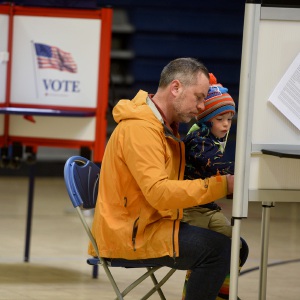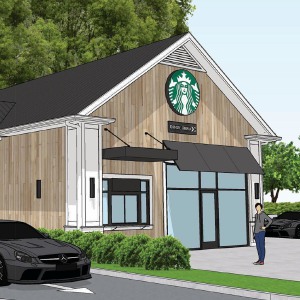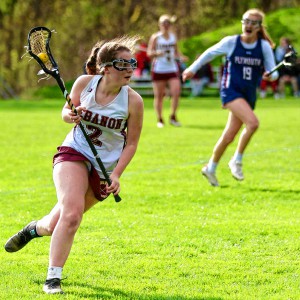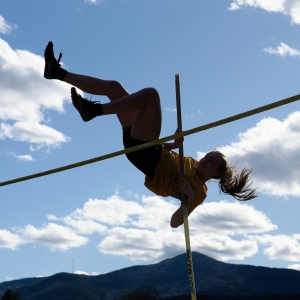On the trails: Making the outdoors accessible for everyone
| Published: 04-25-2023 10:01 AM |
As the trail programs director at the Upper Valley Trails Alliance, I have the privilege of working on many trails across the region. The Upper Valley is lucky to have an expansive variety of trails, including the longest ice-skating trail in the United States on Fairlee’s Lake Morey, mountain bike and skiing networks – and even 50 miles of the Appalachian Trail.
But – as any experienced outdoors person knows – in order to accommodate different user groups, not all trails are made the same. A mountain bike network needs to be constructed differently than a seasonal ski trail; neither will be made exactly like the Appalachian Trail, which traverses steep rocky summits. No matter what activity you like to do on the trails, our area probably has something for you.
With so many outdoor recreation opportunities already available for different user groups, it is no surprise that in recent years the Upper Valley has focused on building “accessible” outdoor recreation infrastructure that can accommodate all users, including those with limited mobility.
More substantial than typical dirt trails, “accessible trails” refers to a set of design standards mandated by the Federal Americans with Disabilities Act of 1990 (ADA). While there is some flexibility due to terrain constraints, generally speaking an accessible trail will be: at least 36 inches wide with periodic places 60 inches wide to pass, a maximum grade of 12% with an average grade of 5% or less, and have accessible structures and facilities.
There are a multitude of accessible trails in the Upper Valley like the Mink Brook Preserve , River Trail, and Pine Park, al in Hanover; the Montshire Trails in Norwich; and Eshqua Bog and Faulkner Trail in Woodstock.
New accessible trails are popping up every year too. During my tenure, the first major accessible trail we helped construct was a continuation of the accessible trail network at the Vermont Institute of Natural Science in Quechee. With the addition of the massive canopy walk, VINS now has nearly a mile of fully accessible trails with multiple features, viewpoints and exhibits. UVTA has also helped construct accessible trails adjacent to elementary schools in Norwich at the Milton Frye Nature Area and Orford at the Cross Rivendell Trail. Additionally, UVTA staff have built multiple portions of accessible trail connecting parking areas to larger networks on the Mascoma River Greenway, Lyme Hill Conservation Area and Ottauquechee River Trail. Online resources such as trailfinder.info can help community members identify accessible trails in the region.
The benefits of these resources cannot be overstated. Accessible trails provide an opportunity for those that may not have many options to experience nature in some of our area’s most beautiful places. In addition to those who use mobility devices, accessible trails are widely utilized by both young children, older individuals and those who may desire gentler terrain for hiking. Since they accommodate just about everyone, this generally makes accessible trails the most used in their communities creating economic benefits for those places as well.
Research shows that spending time in nature has significant positive effects on mental and physical health. Accessible trails in particular extend these benefits to those with fewer options to recreate outdoors. Personally, I visit these trails with my young children because I know that they will not be too challenging. Some of my children’s first outdoor experiences took place on accessible trails. I’ll never forget the day we were walking on the River Trail in Hanover and my daughter noticed a funny creature was swimming in the water. Turns out it was a muskrat repeatedly diving down to eat aquatic plants then floating back up to nibble the grass on the surface. This was a wonderful wildlife sighting for all of us, but I was particularly thankful that accessible trails allowed my toddler the opportunity to see it.
Article continues after...
Yesterday's Most Read Articles
 Kenyon: Dartmouth alumni join union-busting effort
Kenyon: Dartmouth alumni join union-busting effort
 Hartford voters approve school budget and building repair bond
Hartford voters approve school budget and building repair bond
 Starbucks store planned for Route 120 at Centerra
Starbucks store planned for Route 120 at Centerra
 Local Roundup: Hanover pitcher throws a perfect game
Local Roundup: Hanover pitcher throws a perfect game
 Parker up for parole more than 2 decades after Dartmouth professor stabbing deaths
Parker up for parole more than 2 decades after Dartmouth professor stabbing deaths
Though there has been a renewed focus in our area to make trails accessible, more can be done. Retrofitting trails to be fully accessible can be expensive, but small improvements can go a long way toward making it easier for more people to use them. Awareness of barriers to access and advocacy for accessibility can make a huge difference when creating new trails.

 2024 Upper Valley high school girls lacrosse guide
2024 Upper Valley high school girls lacrosse guide Football helmet maker buys Lebanon’s Simbex
Football helmet maker buys Lebanon’s Simbex 2024 Upper Valley high school track and field guide
2024 Upper Valley high school track and field guide
